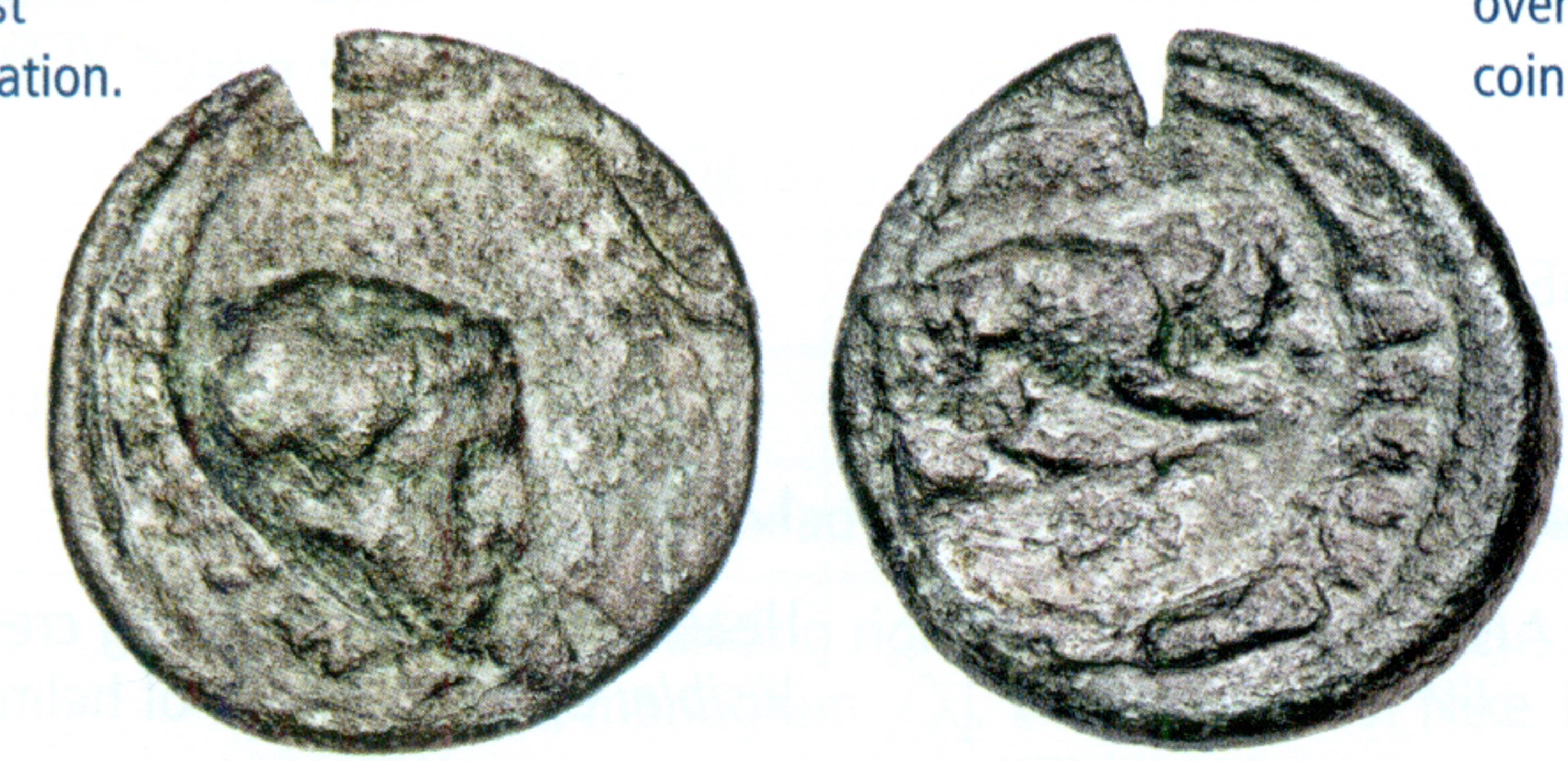365 BCE - 359 BCE | ΠΕΡΔΙΚΚΑ
Overstriking coin
SO 753 - Aegae or Pella over uncertain mint.jpg
Description
| ObverseInscription or printing placed on the obverse.:
|
Head of Herakles right, wearing lion skin headdress.
|
ReverseInscription or printing placed on the reverse.:
|
ΠΕΡΔΙΚΚΑ (Greek) Lion right, breaking spear in jaws.
|
Mint and issuing power
Chronology
| FromIdentifies the initial date in a range assigned in a numismatic context. 365 BCE toIdentifies the final date in a range assigned in a numismatic context.. 359 BCE
|
Classical 480-323 BC  periodTime period of the numismatic object. periodTime period of the numismatic object.
|
Physical description
MetalThe physical material (usually metal) from which an object is made.: Silver 
|
WeightWeight of the numismatic object (in grams). in grams: 3.623.62 g <br />3,620 mg <br />
|
DenominationTerm indicating the value of a numismatic object. Examples: tetradrachm, chalkous, denarius.: drachma 
|
AxisDescribes the directional relationship between the obverse and reverse of a numismatic object.: 11 mm <br />0.1 cm <br />
|
| DiameterDescribes diameter of an object (in mm).: 1717 mm <br />1.7 cm <br />
|
StandardStandard.: Attic
|
References
Description
| ObverseInscription or printing placed on the obverse.:
|
Head of Heracles right, wearing lion's skin (visible: entire outline of host coin and several locks of hair on lion skin).
|
ReverseInscription or printing placed on the reverse.:
|
AMYNTA (Greek) Eagle right devouring snake (visible: outline of eagle from head to wing tip, slight traces of snake).
|
Mint and issuing power
Chronology
| FromIdentifies the initial date in a range assigned in a numismatic context. toIdentifies the final date in a range assigned in a numismatic context..
|
periodTime period of the numismatic object.
|
Physical description
References
References
- ^ SNG Copenhagen/Sylloge Nummorum Graecorum: The Royal Collection of coins and medals
- ^ Hoover, Oliver D. (2016), Handbook of coins of Macedon and its neighbors. 3. Part I: Macedon, Illyria, and Epeiros, sixth to first centuries BC, Lancaster, 437 p.
- ^ Westermark, Ulla (1989), "Remarks on the regal Macedonian coinage ca. 413-359 B.C.", in Georges Le Rider, Kenneth Jenkins, Nancy Waggoner and Ulla Westermark (eds.), Kraay-Mørkholm essays : numismatic studies in memory of C. M. Kraay and O. Mørkholm, Louvain-la-Neuve, p. 301-315
- ^ Gaebler 1935 p. 160
